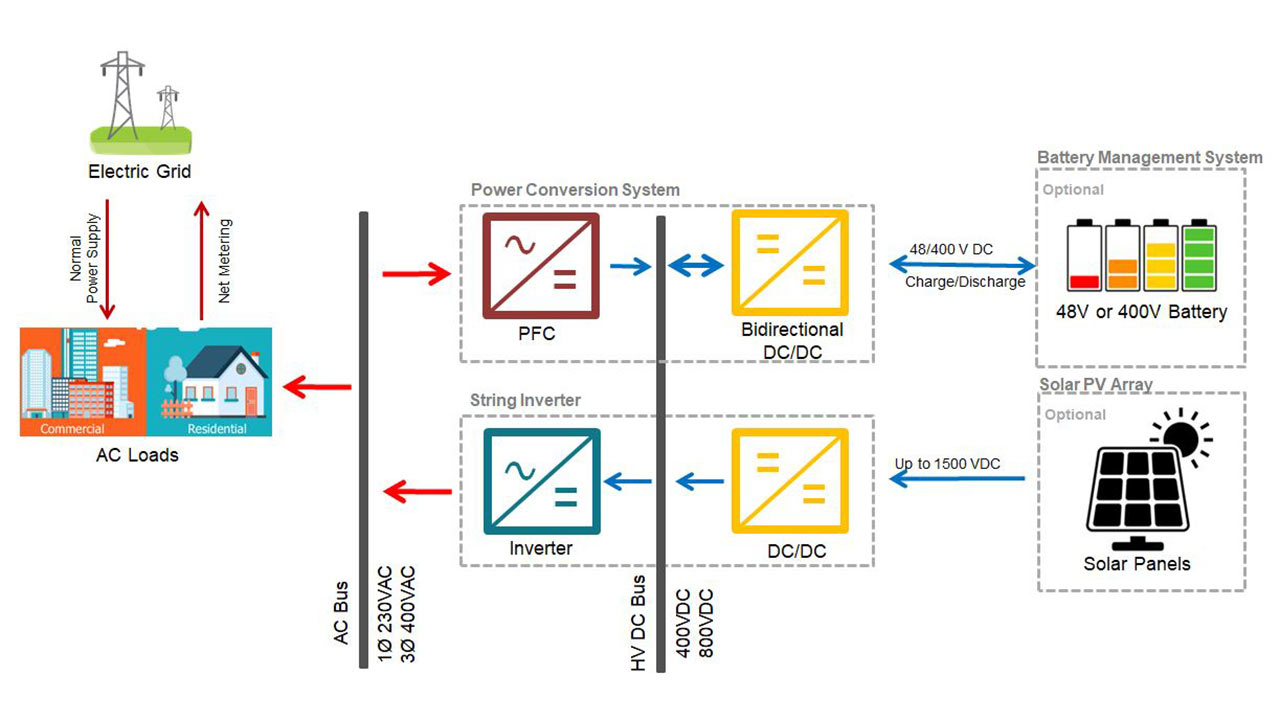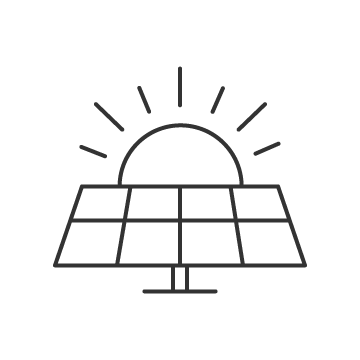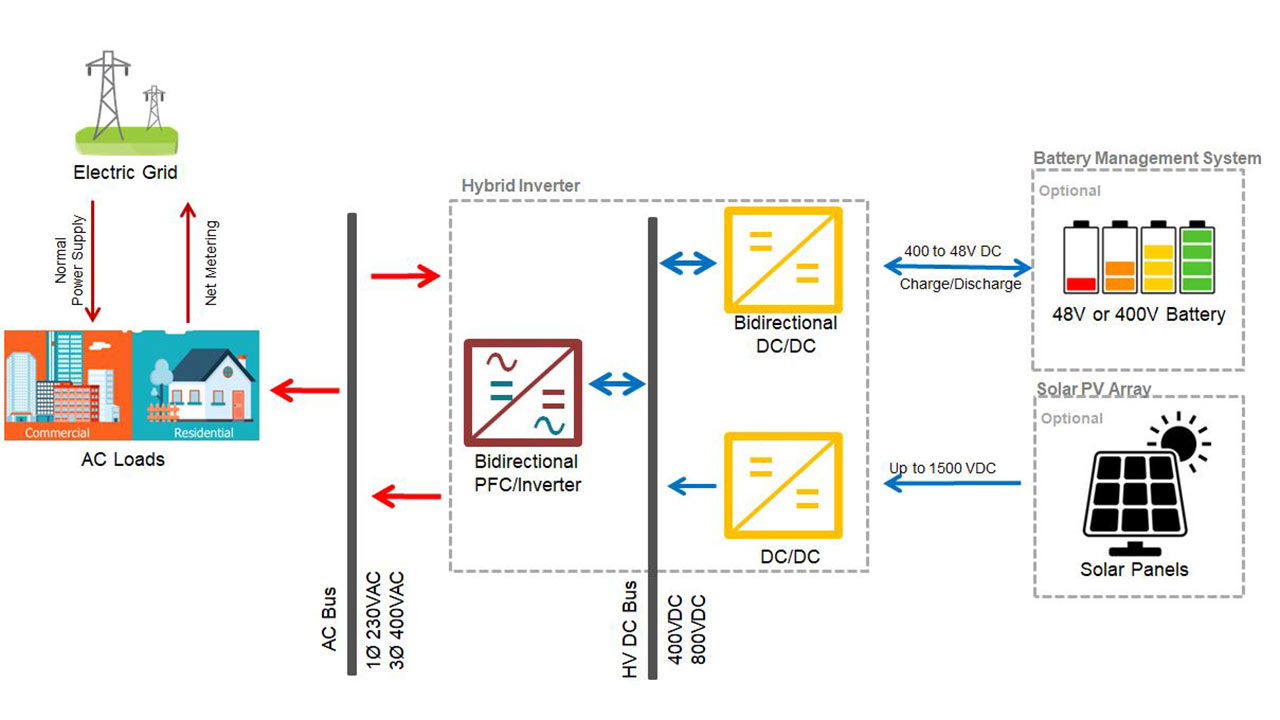-
Stay Ahead of the Energy Storage and Solar Game with Bidirectional PFC and Hybrid Inverter Solutions SSZT290 june 2020 TMS320F280025 , TMS320F280039C , TMS320F280049C , TMS320F28379D
-
Stay Ahead of the Energy Storage and Solar Game with Bidirectional PFC and Hybrid Inverter Solutions
Stay Ahead of the Energy Storage and Solar Game with Bidirectional PFC and Hybrid Inverter Solutions
Osamah Ahmad
Now coming out of its infancy, the residential energy storage market is on the brink of explosive growth. In the U.S. alone, this market has had 232% year-on-year growth since the first quarter of 2018, with behind-the-meter storage making up 46% of deployments in the first quarter of 2019. Today, the residential energy storage sector is comparatively smaller than utility-scale deployments. The global residential energy storage market is expected to grow from an estimated $6 billion in 2019 to $17.5 billion by 2024; that’s a compound annual growth rate of 22.88% (according to the latest Wood Mackenzie U.S. Energy Storage Monitor (paywall).
Companies worldwide have started to see the future growth potential for energy storage, with new players from a range of backgrounds and expertise entering the market.
A crucial design challenge for energy storage developers to overcome is system integration to ultimately enable lower system costs, smaller form factors and reduced number of components and subsystems. In the context of energy storage, system integration means combining two separate paths to charge and discharge the battery into one by moving from unidirectional to bidirectional power conversion stages.
The shift to bidirectional power factor correction (PFC) and inverter power stages
The rise of the energy storage market can be attributed to methods and innovations that have enabled designers to overcome major challenges like system integration and cost. Until newer technology and solutions became available, unidirectional AC/DC, DC/AC, and DC/DC power stages have been the conventional system choice. Figure 1 illustrates a typical system with unidirectional power factor correction (PFC) and inverter power stages.
 Figure 1 Grid-level system diagram with unidirectional PFC and inverter stages
Figure 1 Grid-level system diagram with unidirectional PFC and inverter stagesThis unidirectional approach presents an inevitable barrier to achieving system integration, however. The system will require more power stages, more components and more controllers, ultimately leading to a higher system cost. By nature, energy flows bidirectionally with respect to a battery, either flowing into the battery to charge or flowing out of the battery to discharge. If it were possible to condense these power stages, you could reduce the number of components, modules and subsystems and ultimately achieve a lower system bill-of-materials (BOM) cost.
| Integrate energy storage systems with solar power grids | |

|
Solar energy is abundantly available during daylight hours, but the demand at that time is low. Learn how semiconductor technology like bidirectional power conversion helps achieve a balance of supply and demand. |
A potential solution to these challenges is bidirectional functionality for AC/DC, DC/AC and DC/DC power-conversion stages. To further increase system integration, system BOM and form-factor reductions, the landscape of grid systems that involve energy storage is moving toward bidirectional power conversion blocks like those shown in Figure 2.
 Figure 2 Grid-level system diagram with bidirectional PFC and inverter stage
Figure 2 Grid-level system diagram with bidirectional PFC and inverter stageThis bidirectional implementation is showcased in the latest reference design featuring C2000™ MCUs. The bidirectional interleaved CCM totem pole bridgeless PFC with GaN reference design is based on the TMS320F280049C real-time controller family.
Hybrid inverters
Another market trend that has risen due to the desire to further increase system integration in the energy storage market is the deployment of hybrid or storage-ready inverters. An inverter is simply a function that converts DC power to AC power. But what happens when there are multiple DC sources? In a grid infrastructure setting, a conventional inverter will invert DC power from solar panels into AC power. A hybrid inverter complements a solar inverter system with energy storage so that the same inverter can invert DC power from either the solar photovoltaic (PV) panels or the charged battery. In fact, this is one way solar PV manufacturers are using energy storage to grow their business and stay ahead of the market. Energy storage solutions are inevitable, and hybrid inverters are the key to a risk-free and future-proof solution for solar system designers.
The need and solution
Bidirectional energy storage solutions, including hybrid inverters, require high power efficiency, performance and device compactness. These requirements in turn require the implementation of more advanced power topologies, lower total harmonic distortion, faster transient responses, a higher control-loop frequency and higher pulse-width modulation (PWM) frequencies, which are only achievable through real-time controllers that support more sophisticated PWM schemes, high-resolution PWMs, high analog-to-digital converter (ADC) speeds and high processing power.
The C2000 portfolio of real-time controllers offers these advantages, not only for energy storage systems, but for many digital power applications:
- Low-cost options for high-efficiency maximum power-point tracking, boost, AC/DC, DC/DC and DC/AC subsystems.
- High-end options capable of integrating multiple subsystems, offering a path to hybrid inverters.
- Dual floating-point cores (central processing unit and control law accelerator) to implement complex digital signal processing algorithms.
- A device architecture tightly coupled with real-time processing peripherals for deterministic performance.
- Built-in configurable logic blocks for extended protection and monitoring capabilities, eliminating field-programmable gate arrays/complex programmable logic devices.
- A high-speed (up to 200 Mbps) Fast Serial Interface (FSI) enables fast interconnect between power stages with and without isolation.
- An analog front end, 16-/12-bit ADCs, comparators, digital-to-analog converters and a sigma-delta filter module simplify isolated and non-isolated current and voltage sensing.
- Enhanced PWM and capture modules enable flexibility in configuring power stages.
Table 1 lists reference designs featuring C2000 devices that incorporate the bidirectional implementation of AC/DC and DC/DC power stages, as well as advanced and complex PWM schemes.
Energy storage solutions are on the rise and grid infrastructure designers are investing to keep up with their competitors and the market. Bidirectional power conversion blocks and hybrid inverter solutions allow for reduced components, fewer modules and subsystems, and ultimately a lower system BOM cost. C2000™ devices for real-time control are purpose-built to meet designers’ needs and help continue the growth of the energy storage market.
Additional resources
- Read the application report, "Power Topology Consideration for Solar String Inverters and Energy Storage Systems."
- Learn more about C2000 real-time controllers in digital power applications.
- Read the white paper, “Distributed Power Control Architecture with Multiple MCUs Over FSI,” to learn more about leveraging FSI for distributed power control.
- Check out the features of the “Texas Instruments C2000 Piccolo™ F28004x Real-Time Controller Series.”
- Order the F280049C controlCARD evaluation module.
- Watch the C2000 real-time control MCU: digital control library training series.
IMPORTANT NOTICE AND DISCLAIMER
TI PROVIDES TECHNICAL AND RELIABILITY DATA (INCLUDING DATASHEETS), DESIGN RESOURCES (INCLUDING REFERENCE DESIGNS), APPLICATION OR OTHER DESIGN ADVICE, WEB TOOLS, SAFETY INFORMATION, AND OTHER RESOURCES “AS IS” AND WITH ALL FAULTS, AND DISCLAIMS ALL WARRANTIES, EXPRESS AND IMPLIED, INCLUDING WITHOUT LIMITATION ANY IMPLIED WARRANTIES OF MERCHANTABILITY, FITNESS FOR A PARTICULAR PURPOSE OR NON-INFRINGEMENT OF THIRD PARTY INTELLECTUAL PROPERTY RIGHTS.
These resources are intended for skilled developers designing with TI products. You are solely responsible for (1) selecting the appropriate TI products for your application, (2) designing, validating and testing your application, and (3) ensuring your application meets applicable standards, and any other safety, security, or other requirements. These resources are subject to change without notice. TI grants you permission to use these resources only for development of an application that uses the TI products described in the resource. Other reproduction and display of these resources is prohibited. No license is granted to any other TI intellectual property right or to any third party intellectual property right. TI disclaims responsibility for, and you will fully indemnify TI and its representatives against, any claims, damages, costs, losses, and liabilities arising out of your use of these resources.
TI’s products are provided subject to TI’s Terms of Sale (www.ti.com/legal/termsofsale.html) or other applicable terms available either on ti.com or provided in conjunction with such TI products. TI’s provision of these resources does not expand or otherwise alter TI’s applicable warranties or warranty disclaimers for TI products.
Mailing Address: Texas Instruments, Post Office Box 655303, Dallas, Texas 75265
Copyright © 2023, Texas Instruments Incorporated